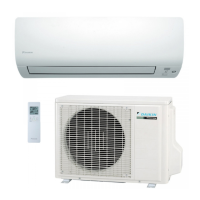C
Charles ChenAug 6, 2025
Why does my Daikin FTXS35DVMW Air Conditioner emit water or steam?
- MMelissa AndersonAug 6, 2025
In HEAT mode, the frost on the outdoor unit melts into water or steam when the air conditioner is in defrost operation. In COOL or DRY mode, moisture in the air condenses into water on the cool surface of outdoor unit piping and drips.


